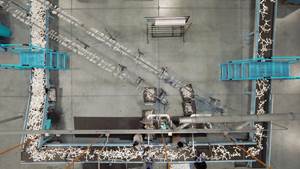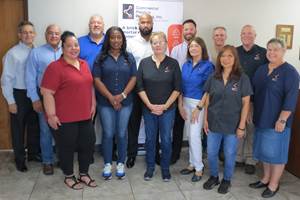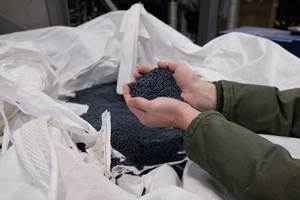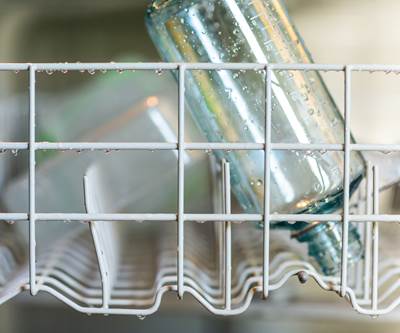Eastman Introduces Tritan Renew with Up to 50% Recycled Content
Courtland Jenkins, Commercial Director, Eastman Specialty Plastics, talks about the significance of launching Tritan with the high recycled content.

Eastman is producing Tritan Renew with certified recycled content for a variety of durable products, including reusable sports bottles.
Eastman has launched its Tritan Renew copolyester, which provides the same durability, performance and safety of original Tritan but now with up to 50% recycled content derived from waste plastic. Eastman will produce Tritan Renew with its Advanced Circular Recycling technologies that use recycled plastic as a raw material, reduce consumption of fossil fuel and have lower greenhouse gas footprints.
“It’s a product that has the same performance as the regular Tritan but what it does, it delivers on the sustainability expectations for our customers,” said Courtland Jenkins, Commercial Director, Eastman Specialty Plastics. “So what it means for our customers is that if you currently run Tritan, you can make the switch fairly quickly.”
In 2019, the company began commercial-scale recycling for a broad set of plastics to keep material from being sent to landfills or incinerated or, worse, ending up in the environment.
Eastman’s Advanced Circular Recycling technologies—carbon renewal technology (CRT) and polyester renewal technology (PRT)—reportedly have a significantly lower carbon footprint than production processes for products made from fossil fuel-based raw materials. Eastman says its molecular recycling technology can return waste plastic to its molecular form an infinite number of times.
Tritan Renew is made via polyester renewal technology (PRT).
“Basically, we’re taking waste plastic and feeding it into existing manufacturing assets. From there, it is broken down into the basic building blocks. And then, in the process, any impurities are removed. So when it comes out, it is identical to virgin material,” Jenkins said.
Use of waste plastic feedstocks in PRT for initial Eastman Tritan Renew products is expected to result in up to 8% reduction in greenhouse gas emissions when compared to the same grades of Eastman Tritan.
“We get the waste from the existing infrastructure out there in the marketplace. So that’s already in place—the collection, sortation and distribution of waste. And so, right now we're tapping into that stream. This first-generation of polyester renewal technology enables us to see the market, understand the opportunities, and to build market demand for it,” Jenkins said.
Market potential
Eastman is producing Tritan Renew with certified recycled content for a variety of durable products, including reusable sports bottles, small appliances, food-storage containers and eyewear, as well as cosmetics packaging. For instance, soon customers will be able to purchase Nalgene bottles made with the Tritan Renew 50% recycled content. The recycled content of these products is achieved through a mass balance allocation process certified by ISCC (International Sustainability & Carbon Certification).
Jenkins said that any current use of the Tritan material could be a good candidate for Tritan Renew. A couple growing areas include Tritan Renew becoming more important for cosmetics as reusability becomes popular with customers. Its role will be as a durable solution for cosmetics refillables.
Medical devices and packaging is another opportunity.
“We believe that our Advanced Circular Recycling technologies will enable us to deliver on some of the sustainability expectations without the constraints that you would often associate with the medical market,” Jenkins said. “We’re getting interest in both our medical devices and medical packaging businesses. It’s a longer value chain and there's a lot of opportunities for us to engage.”
Related Content
Reversing Logistics for Plastic Film Recycling
Learn how Mainetti built a circular supply chain for clear film packaging.
Read MoreInside the Florida Recycler Taking on NPE’s 100% Scrap Reuse Goal
Hundreds of tons of demonstration products will be created this week. Commercial Plastics Recycling is striving to recycle ALL of it.
Read MoreMultilayer Solutions to Challenges in Blow Molding with PCR
For extrusion blow molders, challenges of price and availability of postconsumer recycled resins can be addressed with a variety of multilayer technologies, which also offer solutions to issues with color, processability, mechanical properties and chemical migration in PCR materials.
Read MoreNew Facility Refreshes Post-Consumer PP by Washing Out Additives, Contaminants
PureCycle prepares to scale up its novel solvent recycling approach as new facility nears completion.
Read MoreRead Next
Eastman Talks Increasing Demand for Recycled Materials
Holli Alexander, Eastman’s strategic initiative manager of global sustainability, discusses the company’s recycling initiatives.
Read MoreEastman Discusses Reusable Sport Bottles Consumer Study; Sustainability Aspects
Brad Moncla, marketing segment manager for durables at Eastman, talks about the reusability of its Tritan products, sustainability, and a focus on the company’s COVID-19 response.
Read MoreEastman to Produce Acetate Flake Made from Biobased and Recycled Content
Eastman’s Acetate Renew is a cellulose diacetate composed of 60% biobased and 40% certified recycled content.
Read More















